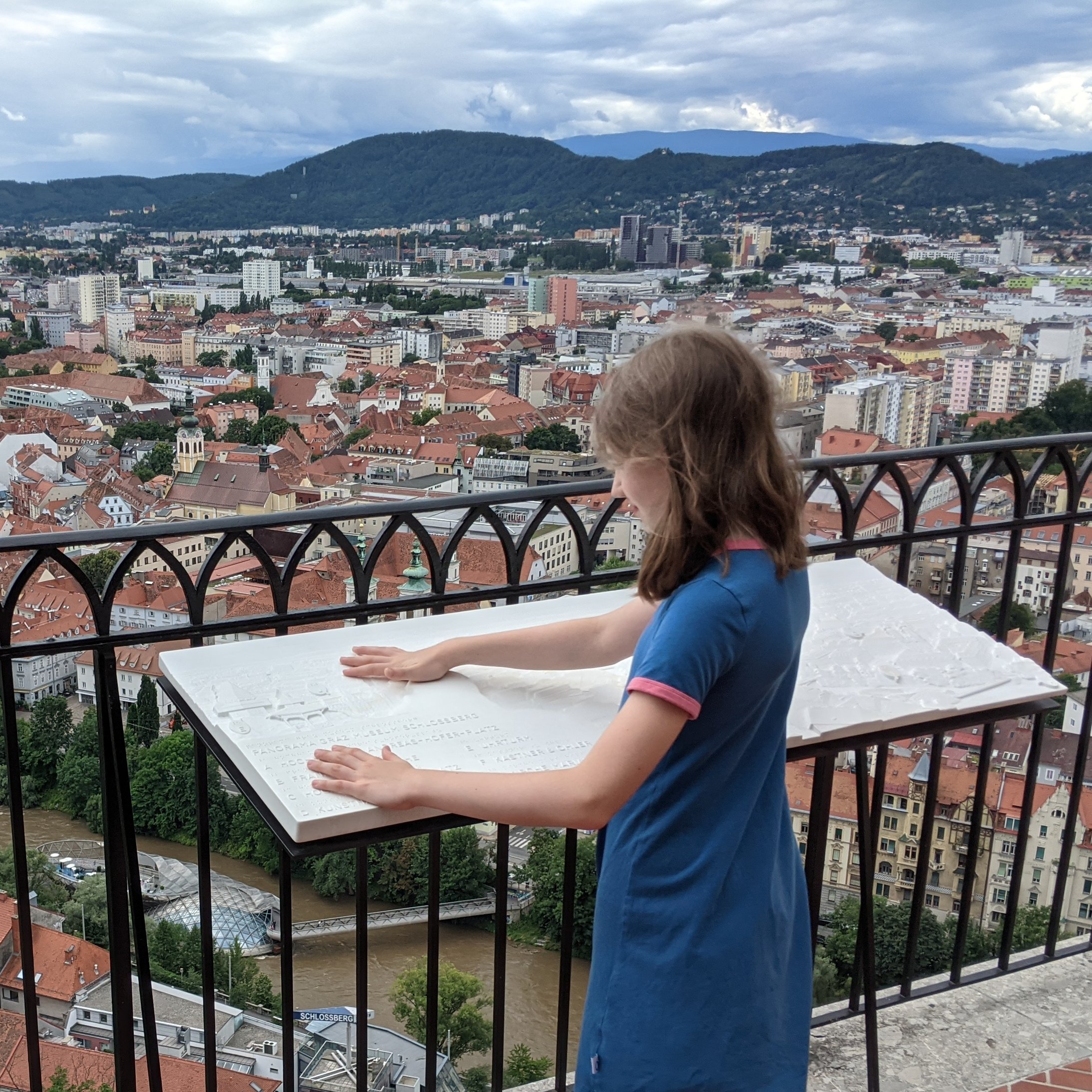
Inclusive Tactile Panoramic Relief of the City of Graz
Company / University:
VRVis Zentrum für Virtual Reality und Visualisierung Forschungs-GmbH
Designer:
Andreas Reichinger
Beschreibung:
Als inklusives Museum wollte das Grazer Museum Schlossberg sicherstellen, dass der außergewöhnliche Ausblick von seinem Balkon für alle Menschen, auch für blinde und sehbehinderte, zugänglich ist. Dazu sollte ein neu geschaffenes taktiles Panorama nicht zu einem einfachen Stadtplan werden, sondern die visuellen Qualitäten, die räumliche Nähe der Sehenswürdigkeiten, die perspektivische Tiefe usw. taktil übersetzen, so wie das menschliche Auge die Welt wahrnimmt.
VRVis erweiterte seine Software für die taktile Modellierung, um aus verschiedenen Datenquellen wie Geländedaten, Vegetationskarten und 3D- Gebäudemodellen ein lebensechtes taktiles Panoramarelief zu erstellen, das genau auf ein Panoramafoto abgestimmt ist, das vom Montagepunkt des Reliefs aus aufgenommen wurde. Taktile Marker wurden entwickelt, um auf wichtige Orientierungspunkte hinzuweisen, ohne die Sicht zu behindern.
Das Graz Museum ist eines der ersten Museen überhaupt, das einen Aussichtspunkt für blinde und sehbehinderte Menschen geschaffen hat, der nicht nur den Stadtplan selbst, sondern auch die eigentliche Ansicht übersetzt. Das taktile Panoramarelief ist bisher einmalig in der Erstellung eines tatsächlichen perspektivischen Tastbildes mit Tiefenschärfe durch die Kombination von Foto und Modell.
Mit der entwickelten Modellierungssoftware kann nun jede andere Ansicht einfacher als je zuvor taktil gemacht werden. Dies ist ein weiterer wichtiger Beitrag zum Forschungsweg von VRVis im Bereich der inklusiven Digitalisierung mit dem Ziel, inklusives Design und taktile Lösungen für mehr Inklusion und Barrierefreiheit voranzutreiben.




